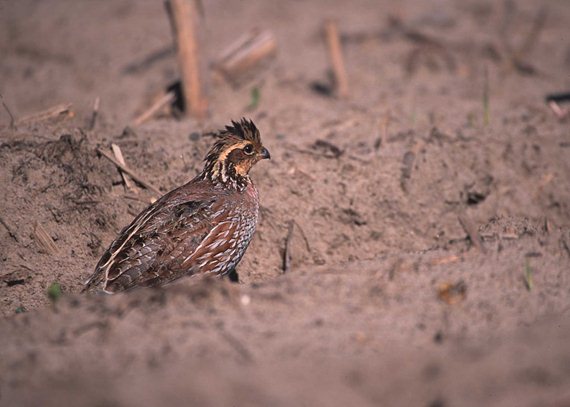MORE HABITAT, LESS PREDATION, BEST OUTCOME
Less-expensive methods to improve game bird populations and nesting success exist. Experts have focused on the amount of habitat (composition of the landscape) and the arrangement (configuration) that increase nesting success by reducing the effectiveness of predators. Well-designed habitat projects can reduce predation by up to 80 percent.

Larger patches of nesting cover (more than 40 acres) have significantly higher rates of nest success than smaller sized patches. For example, in agricultural landscapes where the primary form of grassland habitat is road and drainage ditches, predator activity is concentrated on those smaller strips of cover. In landscapes having a greater component of grassland habitat, predator activity is diluted throughout the many patches of habitat. In addition to diluting predator activity, high grassland landscapes reduce the efficiency of predators.
Cover quality is also important. Dense blocks of undisturbed cover, such as Conservation Reserve Program acreage that is not mowed or grazed, are the most effective at reducing predation. Dense mixtures of grasses and forbs offering good residual cover after winter are highly selected by hen quail because they conceal nests from both avian and mammalian predators.
PREDATOR REMOVAL: A SMALL SCALE REMEDY
Early attempts to decrease the impact of predators on quail populations focused on reducing the overall number of predators, mainly through trapping. These efforts are effective for small areas but are dependent on three important factors.
- Trapping efforts must reduce nest predator populations during the key period of recruitment—beginning prior to, and continuing throughout the entire quail nesting season (approximately 100 days).
- Trapping needs to extend beyond the boundaries of the controlled area. Most nest predators have large home ranges and if trapping efforts fail to account for this, predators from surrounding areas will still negatively impact nesting success within the controlled area.
- Most importantly, a successful removal program is a professional, full-time effort. The occasional removal of individual animals by hunters has very little impact on predator populations and trapping efforts that rely on bounties are destined to fail.
It is important to understand that sustained trapping efforts tend to stimulate reproduction by predators (compensating for artificially low densities) and create populations with proportionately more juveniles that wander more across the landscape thereby increasing the chances of encountering quail.
SUMMARY
While predator removal and exclusion methods can increase nesting success in small areas, these methods are too expensive for use on a landscape basis and do not significantly increase the number of nesting birds over the long term. Through the addition and management of habitat, we not only decrease the impact predators have on existing nests, but also increase the number of nests and population size in an area. Predators will continue to eat quail and their nests, but weather and habitat conditions will drive population fluctuations.